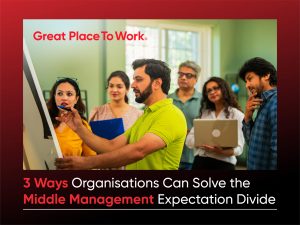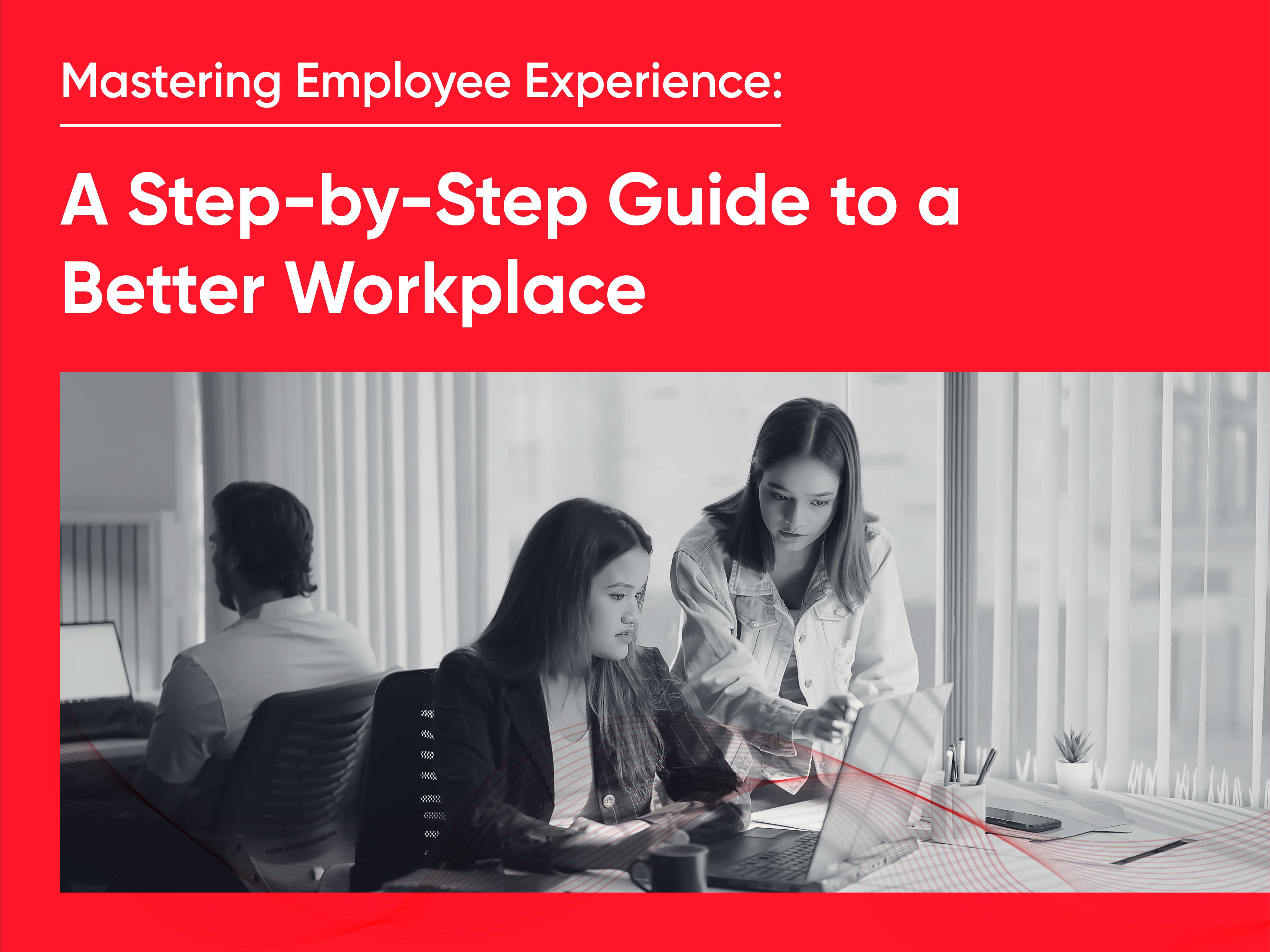Reading Time: 5 minutes
Happiness is deeply personal—what brings joy to one person might not resonate with another. Yet, at its core, happiness is a fundamental driver of well-being. As Aristotle wisely said, “Happiness is the one human desire, and all other human desires exist as a way to obtain happiness.”
Since employees spend a significant portion of their lives at work, the professional environment plays a crucial role in shaping their overall happiness. As writer Annie Dillard aptly put it, “How we spend our days is, of course, how we spend our lives.” For organizations, this connection goes beyond individual well-being, as research consistently shows a strong link between happiness and productivity.
But what truly makes employees happy? And how are the Best WorkplacesTM fostering happiness in meaningful ways? In this piece, we’ll bust some of the biggest myths surrounding workplace happiness and explore what truly works.
Myth 1: Happiness at Work = Perks and Celebrations
While perks and celebrations can spark moments of joy, true happiness at work goes far beyond an occasional party or reward. Research at Great Place To Work® shows that when employees feel that they can truly be themselves at work, and they understand how their roles contribute to the broader organizational goals, employees are 5 times more motivated to come to work.
Best Workplaces create and sustain environments where employees experience joy in momentary experiences along with finding sustained fulfilment by aligning their work with their values and strengths.
Myth 2: Hefty increments and salary are the Key to Happiness
While financial compensation is a distinguishing factor between the Best and other workplaces, it alone may not contribute to long-term motivation or fulfilment. Ensuring fairness in pay and rewards continues to be an employer’s responsibility, but is it what makes employees the happiest? Not necessarily.
Myth 3: Happiness Is an Individual Responsibility
While individual mindset plays a role in happiness, managers significantly influence how employees feel at work. Their leadership style, level of trust, and approach to empowerment shape the emotional landscape of the workplace. Because they have the ability to impact employees’ experiences whether positively or negatively, fostering a culture of support and inspiration becomes a subtle yet important responsibility.
Research by the Great Manager Institute® reveals that 71% of employees decide to stay or leave an organization based on their experience with their managers. Employees thrive in workplaces where they feel supported, valued, and connected to their colleagues. When organizations cultivate a culture of trust and collaboration, happiness becomes a shared experience—not just an individual pursuit.
Myth 4: Happiness Initiatives Are Costly
Building a happy workplace doesn’t always require big budgets or policy overhauls. Simple yet powerful actions- like appreciating employees for their work in open forums, fostering transparent communication, and having meaningful career conversations- significantly enhance employee experience. When employees feel heard, valued, and trusted, happiness follows- not from costly perks, but from a culture of recognition and respect.
Myth 5: Employees’ emotions cannot be tracked
While happiness may seem intangible, some Best Workplaces have successfully measured employee emotions and well-being using tools like mood-o-meters and have linked emotional trends to workplace performance. Tracking employee sentiments not only helps organizations understand workplace morale but also enables managers to proactively address concerns, adapt work environments, and celebrate key milestones. By staying attuned to employee emotions, leaders create a more supportive and thriving workplace.
Here’s how H&R Block, Rank #1 in India’s Great Mid-size Workplaces 2024 is making this a reality: H&R Block has a unique app designed specifically to capture associate’s sentiments across various categories such as Excited, Happy, Confused, Talk to HR, and Weekly Associate Feedback. Every week, the management team conducts a thorough review of the feedback report. Following this review, the leadership team, including their MD, initiates conversations to address cases of confusion or exhaustion among associates. For cases marked ‘Talk to HR,’ the HR team directly reaches out to the concerned associates. 91% of their associates in Trivandrum and Hyderabad have actively used this application in the past. This program has proven to be successful, fostering a culture of transparency and encouraging bold behaviour within the organization.
Creating a Happier Workplace
Building a culture of happiness isn’t about perks or quick fixes but about fostering meaningful work, strong relationships, and a sense of belonging. Here’s how organizations can break the myths and cultivate lasting employee happiness:
01
Connect Work to Purpose: Ensure employees understand how their contributions align with the organization’s larger goals. When employees see the impact of their work, they feel a sense of pride and fulfilment.
02
Empowered Managers, Happier Teams: Managers take accountability for building strong connections, create a supportive environment, and regularly appreciate employees for their efforts. Encouraging employees to bring their authentic selves to work fosters trust and engagement.
03
Recognize and Celebrate Contributions: Establish company-wide forums, regular recognition programs, and informal appreciation moments to highlight achievements. Involving senior leadership in these initiatives can further reinforce the value of employee contributions.
04
Prioritize Psychological Safety: Employees should feel safe to express themselves, whether they’re celebrating successes or navigating challenges. A culture of open dialogue, active listening, and genuine support fosters long-term happiness and well-being.
Happiness at work is not a luxury but a necessity. By taking intentional steps, organizations can create an environment where employees feel valued, engaged, and truly happy.
Get Certified to Showcase Your Commitment
Achieving Great Place To Work Certification™ is an excellent way to demonstrate your organization’s commitment to employees’ overall well-being and experience. This Certification not only enhances your employer branding but also helps attract and retain top talent. It highlights to current and prospective employees that your organization values their overall well-being, fostering an environment where they feel appreciated and supported.
By implementing a culture of trust, respect, and collaboration, you can create a workplace where employees feel valued and connected. Certification also provides a benchmark for continuous improvement, helping you identify areas where you can further enhance employee well-being and overall workplace culture.









